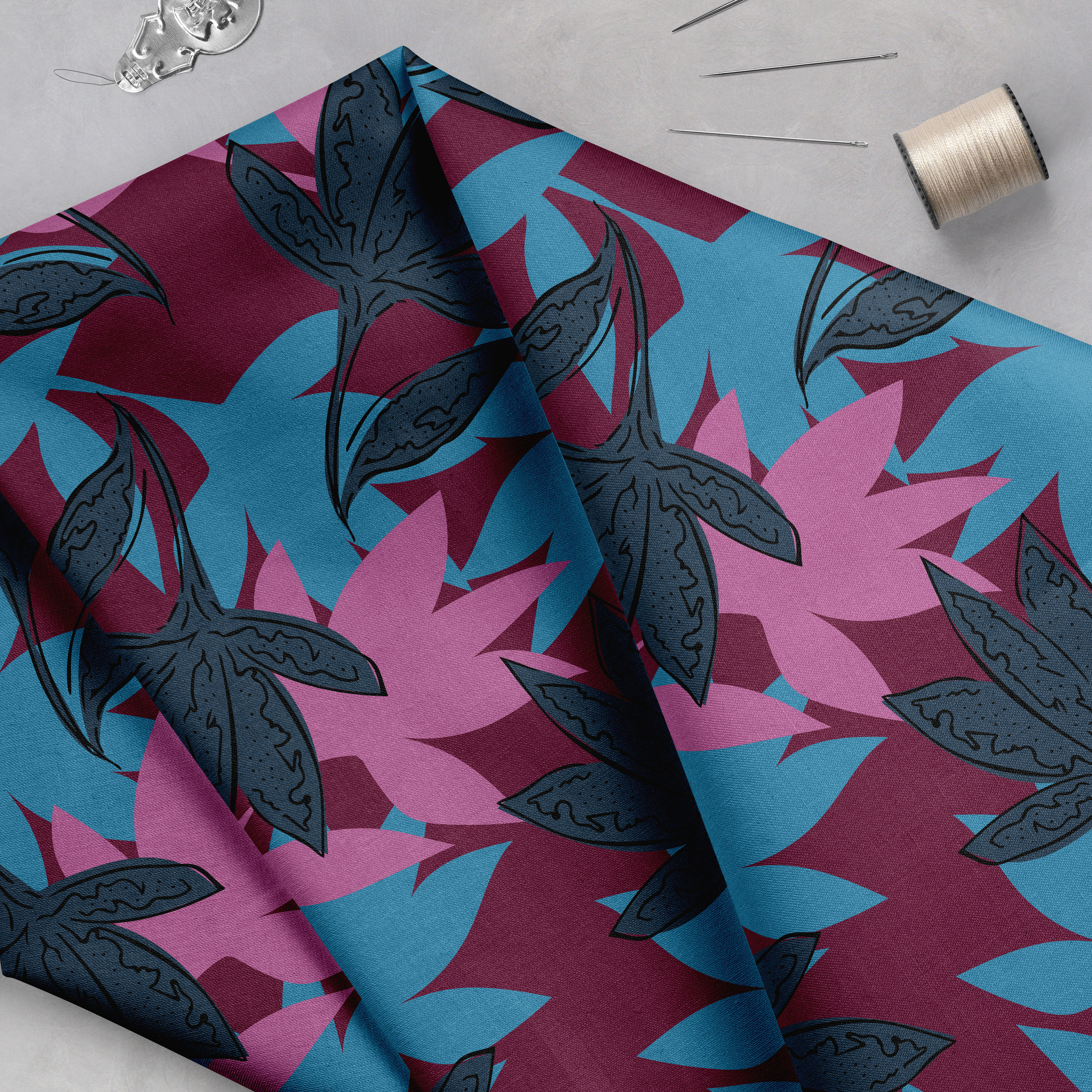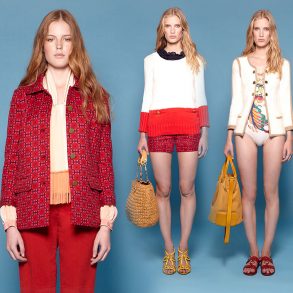The world we live in is full of textiles – clothes, furniture, accessories. But have you ever stopped to think about the intricate process that brings these everyday items to life? That’s where textile design comes in – a unique blend of creativity, technical expertise, and attention to detail. From conception to production, textile designers carefully craft fabrics that invite us to touch, feel, and experience.
Table Of Contents:
- The Craft of Textile Design
- The Power of Surface Design
- Textile Design Educational Opportunities
- The Future of Textile Design
The Craft of Textile Design
Textile design encompasses a diverse range of disciplines, including printed and woven methods.
Printed Textile Design
Printed textile design focuses on applying patterns and designs to fabric surfaces through various printing techniques. These can include silkscreen printing, block printing, and digital printing. The goal is to transform a blank canvas of fabric into a compelling visual masterpiece. Printed textile designers play a significant role in industries such as fashion, home décor, and even stationery.
Woven Textile Design
The ancient art of weaving forms the foundation of woven textile design. This technique interlaces vertical and horizontal threads, known as warp and weft. This creates fabrics with inherent patterns, from a simple plain weave to complex jacquard patterns. Woven textiles offer incredible versatility.
Designers in this field consider yarn type, weave structure, and color combinations. They aim to produce fabrics with specific textures, draping qualities, and aesthetic appeal. Denim jeans, luxurious silk scarves, and cozy woolen blankets are examples of woven textiles.
Mixed Media Textile Design
Mixed-media textile design combines traditional craft techniques with modern innovations. It incorporates embroidery, appliqué, quilting, and even laser cutting. Embroidery involves embellishing fabric surfaces with decorative stitches, which add texture and depth to the fabric. Techniques range from traditional hand stitching to sophisticated machine embroidery.
Appliqué is a technique where fabric shapes are sewn onto a base fabric. This creates designs and images, offering a playful and artistic touch. Quilting stitches together layers of fabric, adding warmth and textural complexity. The designs in quilts can range from traditional geometric patterns to modern abstract compositions.
The rise of technology in textile design has led to exciting developments like laser cutting. Laser cutting involves using lasers to precisely cut intricate patterns and shapes into fabric. This technique allows industry professionals and students to create innovative textile designs.
The Power of Surface Appearance
As Dorothy Cosonas , a prominent textile designer, eloquently stated, “Surface appearance matters … Everywhere you look, products weave together a variety of concepts to create powerful responses.” Textile design goes beyond mere functionality. It’s about creating visual and tactile experiences that resonate emotionally with the user.
Think of how a luxurious velvet sofa invites you to sink into its embrace. Consider how a vibrantly printed scarf can uplift your mood. Textile designers are artists who create experiences through fabric. They understand color, texture, pattern, and drape. They create designs that catch the eye and evoke feelings.
Textile Design Educational Opportunities
In today’s virtual world, both experienced and inexperienced students seeking a career in textile design have various options available. For those who prefer a degree program in textile design, several prestigious institutions offer specialized programs.
The Textile/Surface Design program at FIT is one example. Students “learn to design and develop fabrics for fashion, accessories, and interiors.” They learn a wide range of textile design skills, such as “painting, screen printing, weaving, and digital skills.” You can learn more about eligibility for this program on their website.
For a virtual learning experience, Pattern Observer offers a variety of online courses in our Textile Design Lab community that can help you develop the skills you need to succeed. The courses are taught by experienced textile designers, and they cover everything from the basics of repeat patterns to more advanced topics like digital printing.
One of the great things about Pattern Observer’s courses is that they’re offered online. This means you can learn at your own pace and on your own schedule. Plus, you can access the courses from anywhere in the world.
The Future of Textile Design
Textile design is a dynamic and constantly evolving field. The industry continually embraces new materials, technologies, and sustainable practices. As awareness grows about the environmental impact of fashion and manufacturing, textile design is playing a pivotal role in finding eco-friendly solutions.
Designers are exploring new avenues for sourcing sustainable materials. They’re reducing waste, and using environmentally friendly dyeing and printing processes. This dedication to sustainability is helping transform the industry. Textile design professionals value both aesthetics and responsible production.
The combination of technological innovation and ecological responsibility will create exciting new chapters in the rich story of textile design.
Conclusion
Textile design is more than meets the eye. It’s a multifaceted discipline that combines creativity, technical skill, and a keen eye for detail. From fashion to home décor to technology, textile designers shape the visual and tactile world around us. This makes it a field ripe with possibilities. By embracing innovation, promoting sustainable practices, and honoring the rich traditions of the craft, textile design continues to weave its vibrant tapestry into the fabric of our lives.





